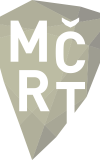Muzeum Českého ráje (The Museum of Bohemian Paradise) in Turnov was established in 1886 and was one of the first Czech museums outside Prague. Thanks to the bequest of patron Josef Boháček (1853–1932), the museum achieved its permanent headquarters in a spacious Neo-Renaissance building, from 1974 with an adjoining gallery containing a large canvas of the Defeat of the Saxons under Hrubá Skála (8.5 x 10 m in size) and later with the neighbouring ‘U Zlatého bažanta’ (The Golden Pheasant) Baroque building.
The museum premises were extended in 2010 with a replica of a timbered municipal house which has a small exhibition on the regional collectors and ethnographers Josef and Jana Scheybal and which holds popular creative workshops for adults and children. Originally an ethnographic museum with ethnographic, historical, archaeological and mineralogical collections, the museum still presents to visitors the prehistory and contemporary history and culture of the Czech Paradise, traditional crafts and folk art. However, in recent decades the museum has shown an apparent tendency to focus on the occurrence and processing of precious stones, so typical for the town of Turnov and its region. The introductory part on geology and mineralogy presents the processes which formed our planet and offers a detailed look at the formation of the landscape of the Czech Paradise. The accompanying presentation on precious stones, including rare examples of gemstones found at Czech and world sites, shows their diverse beauty and physical properties. The permanent exhibition on Turnov’s stone making presents the fascinating journey from primitive jasper tools, 9000 years old, to the jewel and technical stone which made Turnov famous worldwide. It features examples of stone cutting, engraving in gemstone, production of glass imitations, the stone making brotherhood, the establishment of the jewellery school in 1884, and compares historical and modern jewels, especially those containing Czech garnet. A look into the world of advanced technologies, for instance, lasers, where precious stones are also used, is just as interesting. An overview of gem cutting and goldsmith skills is crowned by the attractive Treasury in the museum’s basement which contains jewels and gems made by teachers and students of Turnov’s jewellery school, frequently awarded prizes at world exhibitions.





